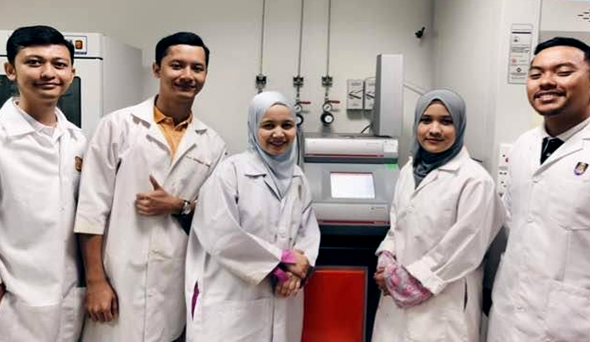Green Synthesis Towards a Sustainable Future
 |
Green chemistry and its applications in synthetic organic chemistry have become a new concept for the development of clean and benign chemical processes. Chemists started to design new methods that reduce the amount of reagents used and thus reduce the amount of waste generated from the reactions. Microwaveassisted synthesis has now become the new non-conventional method in organic and inorganic synthesis, replacing the classical reflux that proves to be eco-friendly, clean and convenient. The uses of microwave irradiation from Anton Paar as heat source not only shorten the reaction time but also enhanced product yield as well as enhanced the purities by reducing unnecessary side reaction. The condensation reaction of primary amines with active carbonyl compounds led to the formation of azomethine compounds. Azomethine compounds are considered as “privileged ligand” by many due to its stability and structural design. The azomethine (C=N) group found in Schiff base compound are known to be biological active. |
| Thus, it received significant attention in chemistry and biology for it various applications such as antitumor, antifungal and antibacterial. Schiff base derived from diamine compound are valuable precursors for multinuclear complexes. The condensation between phenylenediamine with salicylaldehyde, resulting in the formation of N2O2 donor-type ligand.This type of ligand is interesting because of its capability to coordinate with either one or more metal ion, depending on the positional relation between two amino groups in precursor. All compounds undergo antibacterial screening against Escherichia coli, Bacillus subtilis, Enterobacter cloacae, and Klebsiella pneumoniae. The antibacterial screening shows that Ni(II) and Zn(II) complexes provide moderate inhibition towards Klebsiella pneumoniae and Bacillus subtilis respectively. | |
